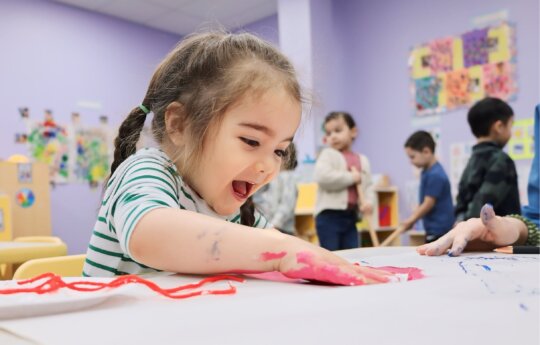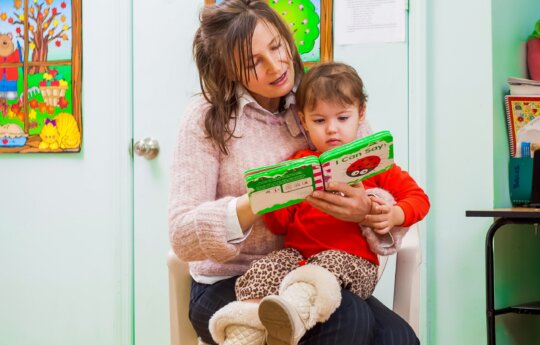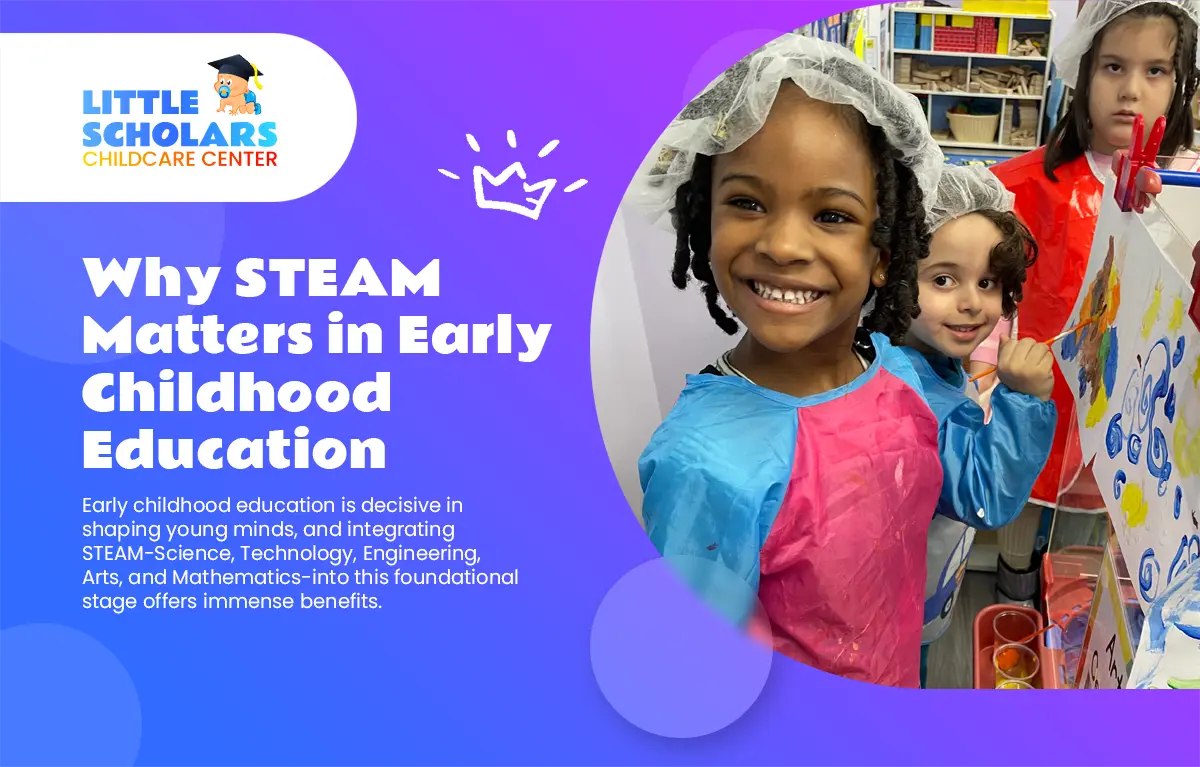
Early childhood education is decisive in shaping young minds, and integrating STEAM—Science, Technology, Engineering, Arts, and Mathematics—into this foundational stage offers immense benefits. At its core, STEAM ignites curiosity, fosters creativity, and cultivates problem-solving skills, making learning engaging and impactful.
By combining hands-on exploration with innovative thinking, STEAM helps children develop critical skills like collaboration and adaptability while encouraging them to view challenges as opportunities to grow. These early experiences lay the groundwork for lifelong learning and success in a constantly evolving world.
The Benefits of Early Childhood Education Through STEAM
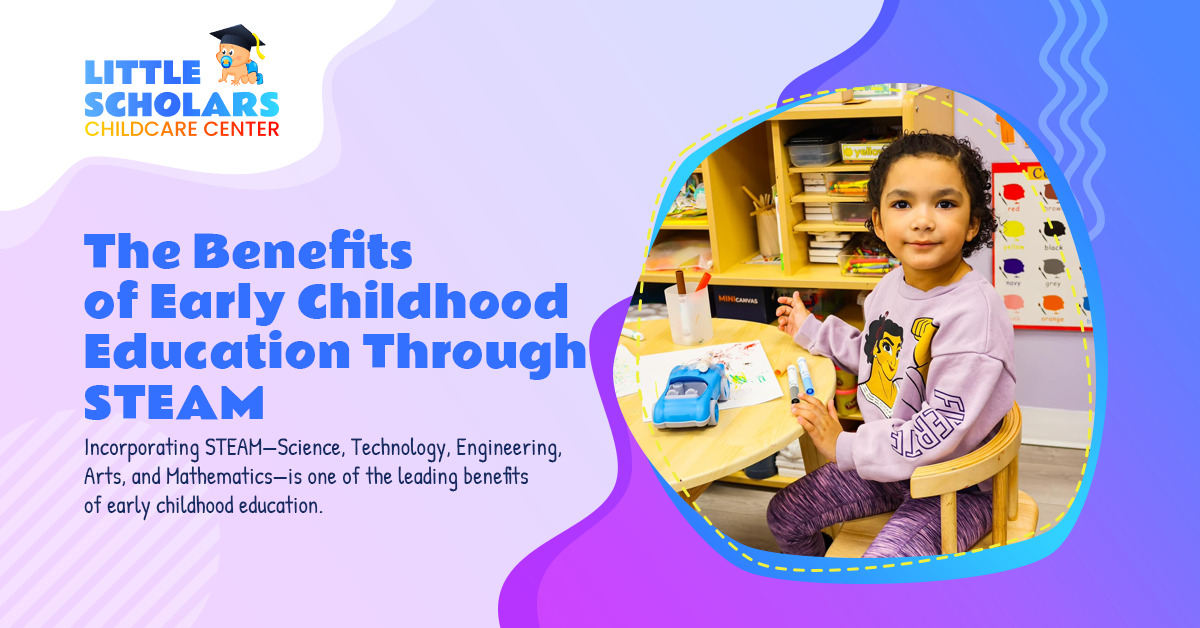
Incorporating STEAM—Science, Technology, Engineering, Arts, and Mathematics—is one of the leading benefits of early childhood education. Children develop critical skills that extend beyond the classroom by engaging in hands-on, interactive activities.
Cognitive Growth Through Hands-On Learning
STEAM encourages children to explore, ask questions, and experiment, vital for cognitive development. Children develop a deeper understanding of the world by engaging in activities like building structures, coding simple commands, or exploring nature.
Here are some key cognitive benefits of STEAM:
- Critical thinking skills: Children learn to analyze situations and make thoughtful decisions.
- Problem-solving abilities: Activities challenge young minds to find creative solutions.
- Curiosity-driven learning: Hands-on tasks inspire children to ask “why” and “how,” fostering a love for exploration.
These cognitive advancements prepare children for academic challenges and instill a lifelong passion for learning. Each activity gives them the confidence to tackle new and complex ideas.
Social and Emotional Development Through Collaboration
STEAM often involves teamwork, where children collaborate on projects like building bridges or creating art. These group activities foster social interaction and emotional growth, teaching children to communicate, share, and empathize with their peers.
A few emotional and social benefits of STEAM include:
- Empathy-building experiences: Working together helps children understand and value others’ perspectives.
- Improved communication: Collaborative tasks teach effective sharing of ideas.
- Resilience through trial and error: Children learn to persevere and adapt when their first attempts don’t succeed.
Through these experiences, children build friendships and develop the emotional strength to face challenges confidently and gracefully.
Creative Thinking Through Art and Design
Integrating arts into STEAM fuels creativity, allowing children to express themselves while exploring scientific concepts. For example, designing and painting a model rocket combines artistic expression with understanding engineering principles.
The creative benefits of STEAM include:
- Innovative problem-solving: Art inspires new ways to approach challenges.
- Confidence through self-expression: Creating something unique gives children a sense of accomplishment.
- Cross-disciplinary thinking: Combining art with science fosters holistic understanding.
These activities empower children to think outside the box and approach learning with an open mind. The blend of creativity and logic is a skill that will benefit them forever.
Technological and Future-Ready Skills
STEAM introduces young learners to technology in a hands-on, engaging way. Whether they’re experimenting with simple coding tasks or exploring basic engineering, these activities prepare them for a world increasingly reliant on technology.
Key future-ready skills developed through STEAM include:
- Tech literacy: Familiarity with essential tools and concepts of technology.
- Adaptability to change: Learning new tools and techniques helps children stay flexible.
- Team-based problem-solving: Many technological projects require collaborative efforts.
By gaining these skills early, children can thrive in academic settings and future careers, making STEAM an invaluable component of early childhood education.
The Importance of Early Childhood Development in STEAM Activities
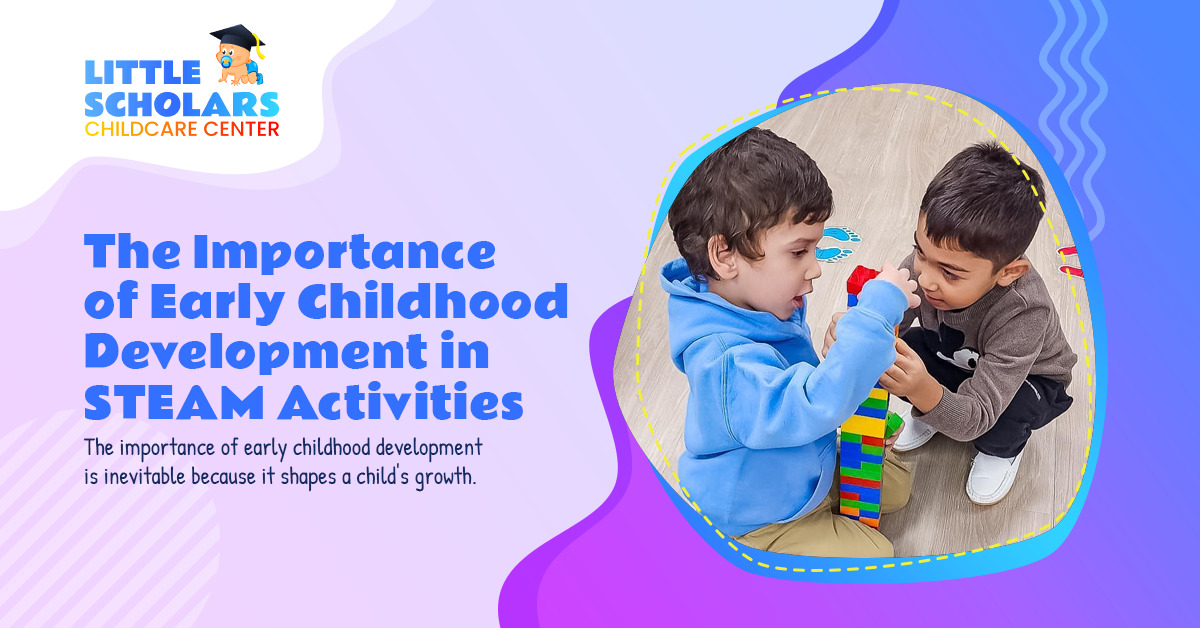
The importance of early childhood development is inevitable because it shapes a child’s growth. STEAM supports the holistic development of young minds by combining hands-on learning with essential skills that foster intellectual, emotional, and social growth.
Cognitive Growth Through Exploration
STEAM activities encourage curiosity and active problem-solving, key aspects of early childhood development. By engaging in tasks like building models, conducting simple experiments, or exploring nature, children develop cognitive skills that set the foundation for future learning.
Here are some cognitive benefits of STEAM:
- Improved problem-solving skills: Activities challenge children to think critically and find creative solutions.
- Enhanced logical reasoning: Working on projects helps children connect concepts and patterns.
- Fostering a love for learning: STEAM activities encourage children to ask questions and seek answers, building a natural curiosity.
These experiences nurture a child’s ability to think independently and confidently tackle challenges, key traits for academic and personal success.
Social Skills Development Through Collaboration
Collaboration is a cornerstone of STEAM activities, teaching children the importance of teamwork and communication. Whether building a structure together or solving a puzzle as a group, these tasks create meaningful interactions that develop social and emotional skills.
Some social benefits of STEAM activities include:
- Building empathy: Group projects help children understand and appreciate diverse perspectives.
- Strengthening communication: Sharing ideas and listening to peers improves interpersonal skills.
- Learning cooperation: Working toward a common goal fosters teamwork and respect for others.
Through these collaborative efforts, children gain valuable experience forming relationships and navigating social environments, laying the groundwork for future success.
Physical and Motor Skill Development
Many STEAM activities involve hands-on tasks that help refine a child’s fine and gross motor skills. Activities such as constructing towers, creating art, or using simple tools engage children physically while supporting their cognitive growth.
Motor skill benefits of STEAM activities include:
- Fine motor skill enhancement: Cutting, drawing, and assembling objects improve hand-eye coordination.
- Gross motor skill development: Larger projects, such as building with oversized blocks, encourage full-body movement.
- Spatial awareness: Activities that involve arranging or designing objects build a sense of space and dimensions.
STEAM engages children by integrating physical movement with intellectual challenges while promoting overall development.
Emotional Growth Through Resilience
STEAM activities often involve trial and error, helping children develop resilience and emotional intelligence. When children encounter obstacles, they learn to view mistakes as learning opportunities and persist until they succeed.
Key emotional benefits of STEAM include:
- Building confidence: Completing challenging tasks fosters a sense of achievement.
- Encouraging perseverance: Children learn to keep trying, even when they face difficulties.
- Developing emotional regulation: Managing frustrations during projects teaches patience and self-control.
This emotional growth equips children with the tools they need to navigate challenges in learning and life, creating a strong foundation for their future.
Integrating STEAM into the Early Learning Curriculum
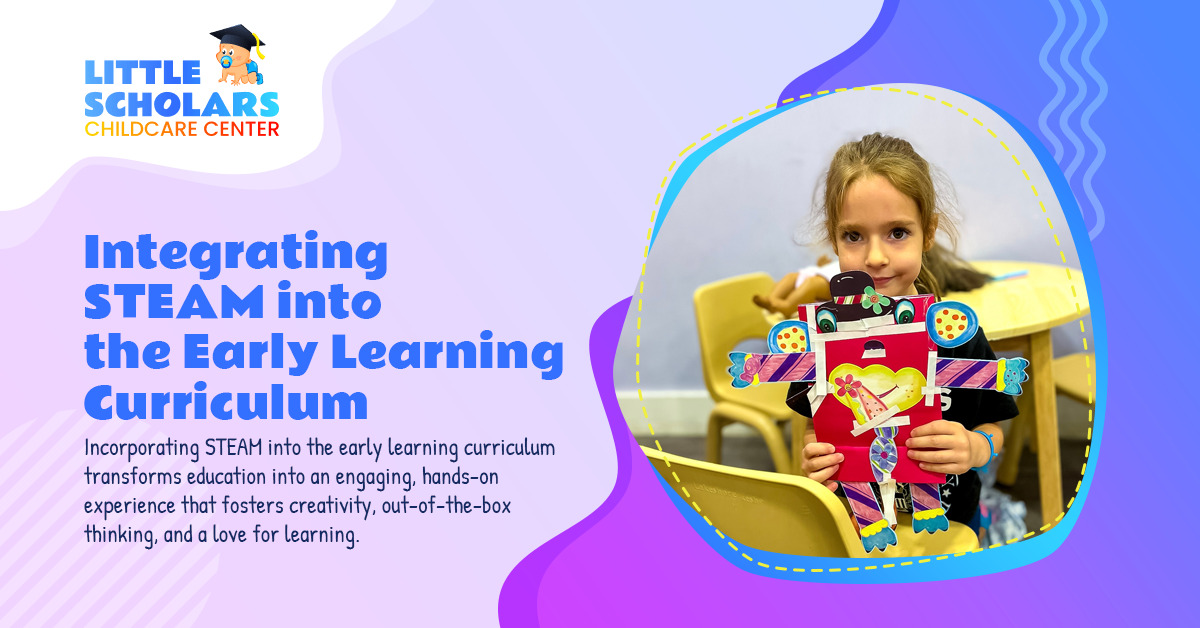
Incorporating STEAM into the early learning curriculum transforms education into an engaging, hands-on experience that fosters creativity, out-of-the-box thinking, and a love for learning. By introducing age-appropriate STEAM activities, educators can provide children with a well-rounded foundation that prepares them for academic success and real-world challenges.
Creating a Balanced STEAM Curriculum
A successful STEAM curriculum in early education should integrate interactive, age-appropriate activities that include all five STEAM components. This balanced approach ensures that children gain exposure to diverse concepts while learning naturally and enjoyably.
Key elements of a balanced STEAM curriculum include:
- Hands-on experiments: Simple science activities introduce children to cause-and-effect relationships, like mixing colors or growing plants.
- Technology integration: Using tools like tablets or coding toys helps children become familiar with technology early on.
- Engineering challenges: Building bridges or towers with blocks encourages problem-solving and critical thinking.
- Artistic creativity: Drawing, painting, or creating 3D models enhances self-expression and innovation.
- Mathematical exploration: Counting games, shape puzzles, and measuring activities build foundational math skills.
By weaving these elements into daily lessons, educators can create a dynamic learning setting that captivates young minds and nurtures holistic growth.
Making STEAM Accessible to Young Learners
The early learning curriculum should make STEAM concepts accessible and relatable to children’s everyday lives. This approach helps children see how the principles of STEAM are present in the world around them, sparking curiosity and engagement.
To make STEAM relatable, educators can:
- Connect activities to real-life scenarios: For example, explore weather patterns through art or experiment with water flow during playtime.
- Use familiar materials: Everyday items like cardboard, string, or household objects can be turned into exciting STEAM projects.
- Incorporate storytelling: Linking STEAM activities to stories or characters helps children connect emotionally to the lessons.
These strategies ensure that children feel comfortable and excited about exploring new concepts, making STEAM an integral part of their early learning experience.
Encouraging Play-Based STEAM Learning
Play is a natural way for children to learn, and integrating STEAM into playtime allows them to explore concepts in a fun, stress-free environment. Educators can design activities that align with STEAM principles while encouraging creativity and experimentation.
Examples of play-based STEAM activities include:
- Building structures: Using blocks or Legos to construct towers or bridges introduces engineering and spatial awareness.
- Exploring nature: Observing insects, planting seeds, or collecting rocks fosters curiosity and scientific thinking.
- Creating art with math: Drawing geometric shapes or patterns blends creativity with basic math concepts.
Play-based learning ensures that children stay engaged and motivated while developing key skills in problem-solving, teamwork, and innovation.
The Role of Educators in STEAM Integration
Educators are critical in seamlessly incorporating STEAM into the early learning curriculum. They serve as guides and facilitators and help children navigate challenges, ask questions, and discover solutions independently.
An effective educator in STEAM-focused learning:
- Encourages exploration and curiosity.
- Provides opportunities for hands-on experimentation.
- Adapts lessons to the developmental needs of each child.
With the proper support from educators, STEAM becomes an enriching, transformative experience that shapes how children approach learning and the world around them.
Conclusion
STEAM is more than just an educational approach—it’s a gateway to unlocking a child’s potential in every development aspect. By integrating STEAM into early childhood education, we nurture curiosity, creativity, and critical thinking approaches that will benefit children for a lifetime. From cognitive growth to social and emotional resilience, the impact of STEAM is profound, preparing young learners to thrive in school and beyond.
Ready to see the magic of STEAM in action? Schedule a tour of our center today to discover how we can ignite your child’s passion for learning. Visit our website or call +1 917-475-0001 to book your tour now!

